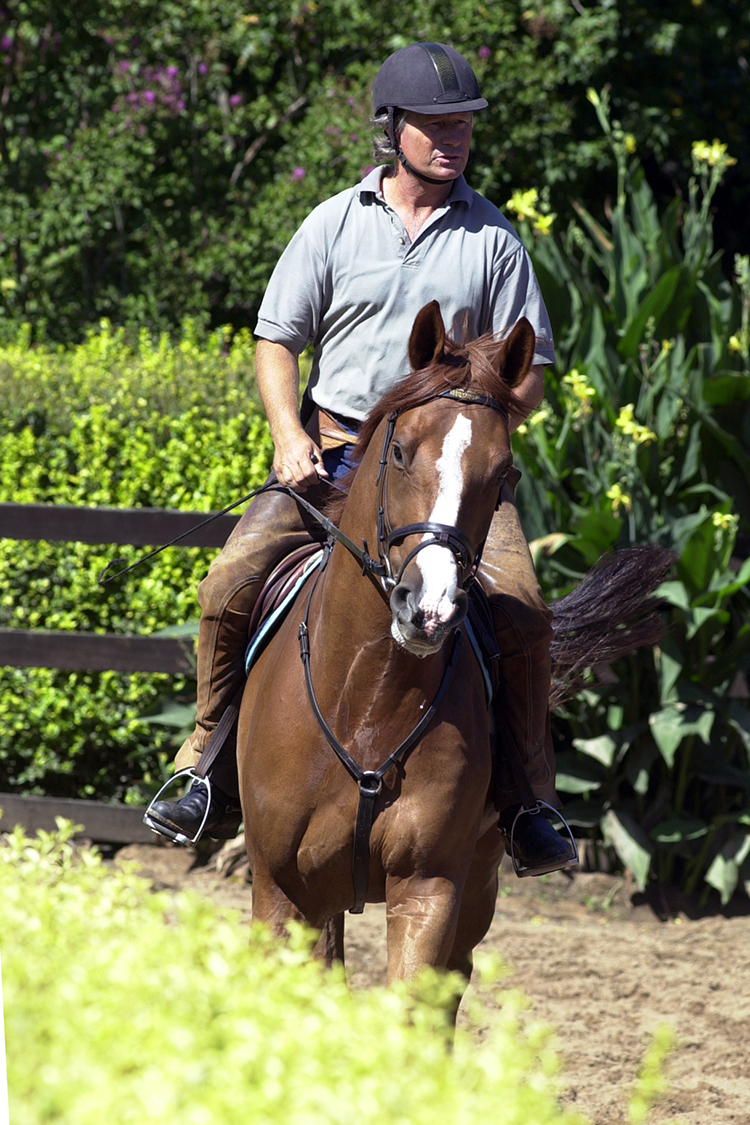 It is really exciting in the Australian jumping world right now with the arrival of some purpose bred, and talented young horses. Paratus is just one of those. He arrived in November last year, and is six years old by Aldatus by Aldato by Alme out of a mare by Libero H.
It is really exciting in the Australian jumping world right now with the arrival of some purpose bred, and talented young horses. Paratus is just one of those. He arrived in November last year, and is six years old by Aldatus by Aldato by Alme out of a mare by Libero H.
In Europe, Paratus had jumped a metre twenty before George bought him in partnership with Charles Blinkworth. Since he’s been in Australia, the horse has been settling in and has only done four shows.
He shows great promise – with one problem. He is SPOOKY- capital letters spooky. As usual with George Sanna there is a sane, and sensitive program mapped out to get around the issue.
”There is no hiding the fact that he is spooky. Luckily he is less spooky in the ring than he is here. At home he is very spooky. Even at the practice jump he is very spooky. In the ring he is not too bad at all.”
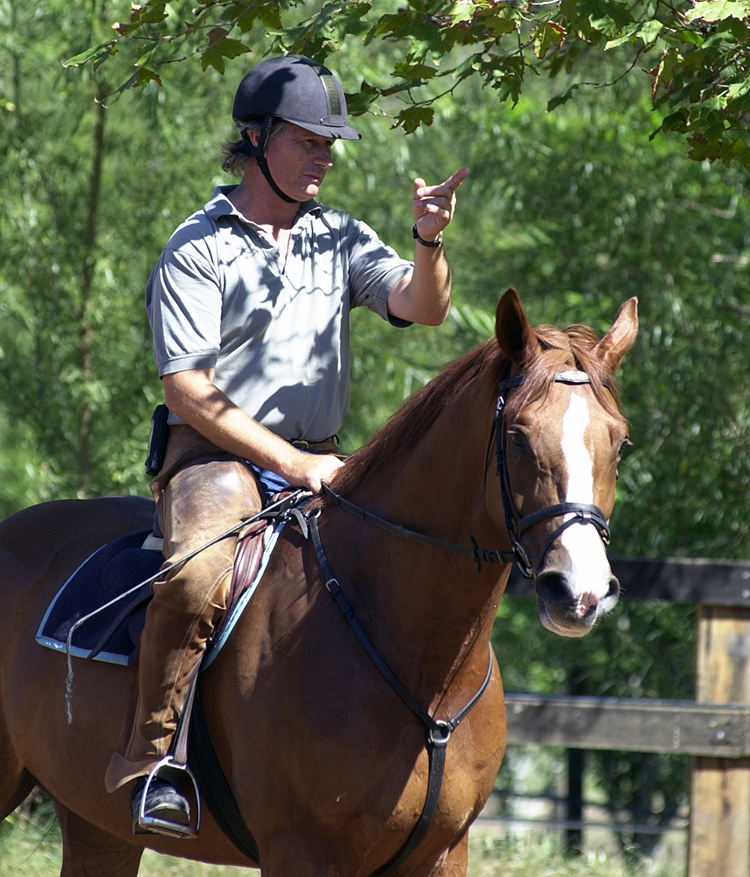
ls spooky good?
“Can be, but it can also stop them from being good, it depends on in what way they are spooky. Some horses are spooky and low -they look down into the jumps, they jump low and don’t look at the top of the jump.”
“Some horses are spooky but it gives them a real awareness of the jump, and it makes them more careful. If a horse is spooky, then it needs a professional rider on it. What spookiness does very easily is change your distance. They have a distance, then they spook and prop and you lose your distance completely. You’ve got to be very quick to make it happen sometimes.”
“This horse is not stop spooky. He doesn’t want to pull up, but he is very spooky, some days more than others.”
“The solution to spookiness is just mileage. Not letting him affect the distance, even if he is spooky he has got to keep going. He is a little bit like Will (still competing in World Cups at 20 with Michelle Barrera) was when I got him, if you have to compare him to another horse.”
“The look of the jump doesn’t actually make much of a difference -jumps, just jumps are enough to make the difference. He’ll react to anything in front of him, he’ll come round the corner to the fence, look at it, and do a double take.”
“Most horses are much spookier in the ring than anywhere else, this horse hasn’t been that way, thank god. He jumped in the, Futurity at Tempo. He probably wasn’t quite ready for that. I’d say that was the biggest track he’s jumped and it was only his second show since he arrived from Europe.”
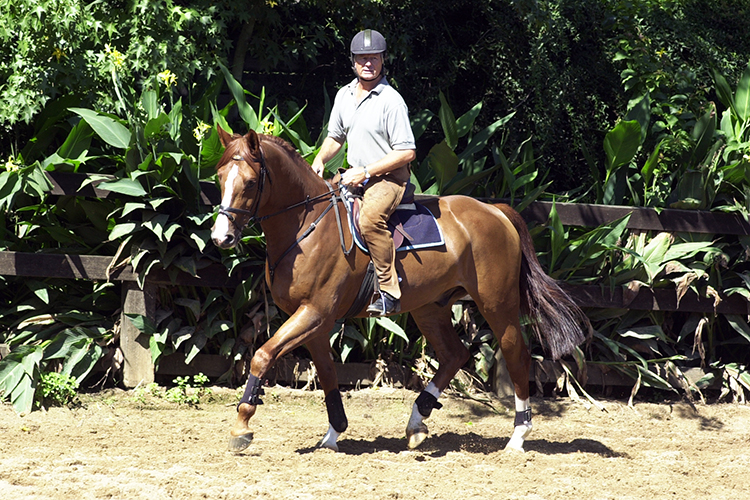
“Since Tempo I’ve done a few shows and he’s got better and better. He could have won the Grand Prix at the last show, if I’d started him in it. Once he’d been around, knew the place and knew the jumps, he was right. He had three starts for two seconds and a first, I could have won all three.”
“He is an extremely good jumper, he’s got great technique, he is a beautiful horse to ride, beautifully balanced. He is a nice mixture – responsive without being hot, he’s got plenty of motor but not hot at all. He’s got great balance in the canter, fairly straight, just exactly how you would like a horse to be. He will probably spook a little this morning, he hasn’t jumped for quite a while. And he hasn’t jumped this configuration of the jumps. We re-surfaced the arena the other day, and changed all the jumps around, so that’ll get him going probably. On the flat he is so good to ride that it is almost boring, I would say he’d had a decent rider on him in Europe. Spookiness is a bit of a no-no in Europe mainly because you need a decent rider on them. I’m confident we’ll get over his spook and in time, he’ll just become pleasantly aware. By the fourth show I took him to, he was just delightful – he jumped anything from anywhere at any pace.”
“I bought him in Holland. As a type and size, to me he is perfect. A bit of substance, nice length of rein. Physically and mentally, in terms of responsive the horse is great – it is only the spookiness, and I guess that is why I was able to buy him, because he is one hell of a jumper.”
“I’ll back myself to sort out the spook. Sometimes I carry a long dressage whip when I ride him, so I can swish him without having to take my hands off the reins. If when we come round the corner, he drops behind my leg, I can swat him dressage style and keep him moving, rather than having to reprimand him. Sometimes we can be going all over the place to get to the jump.”
“Having said that, I am really describing the horse as he was two months ago, he might not spook at a II today. I had one ride on him before we bought him – at the stables. And I saw a video of him at a show – I wouldn’t have bought him without seeing that video because he was spooky enough at his home base. The guy said he was less spooky when he went out, and he was a Dutch horse dealer so I didn’t really believe him, but he was right.”
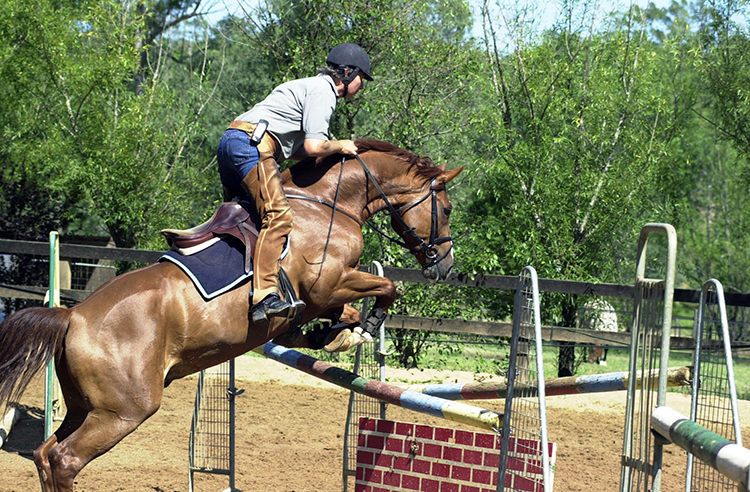
“He’s a fairly raw C grader at this stage, but the thing with the European horses is that it doesn’t make much difference to them if they jump a metre twenty or a metre fifty, they just jump the damn things.”
Sure enough he has a bit of a spook at his first fence. What do you do in that situation?
“Try to anticipate it, try not to get caught asleep, so you are already there, that’s the key, and that is where maybe the amateur wouldn’t be able to anticipate and gauge just where and when, and sometimes they can still surprise you, they’ll catch you when you don’t think they are going to spook or you end up over-riding them where they weren’t going to spook at all.”
“The horse is so aware of what is in front of him, he eyeballs the fence he is coming to, and doesn’t see the next fence until he has taken a stride or two and then his immediate reaction is AAAH, and if you haven’t got your wits about you, suddenly three strides becomes three and a half. You’ve just got to be ready.”
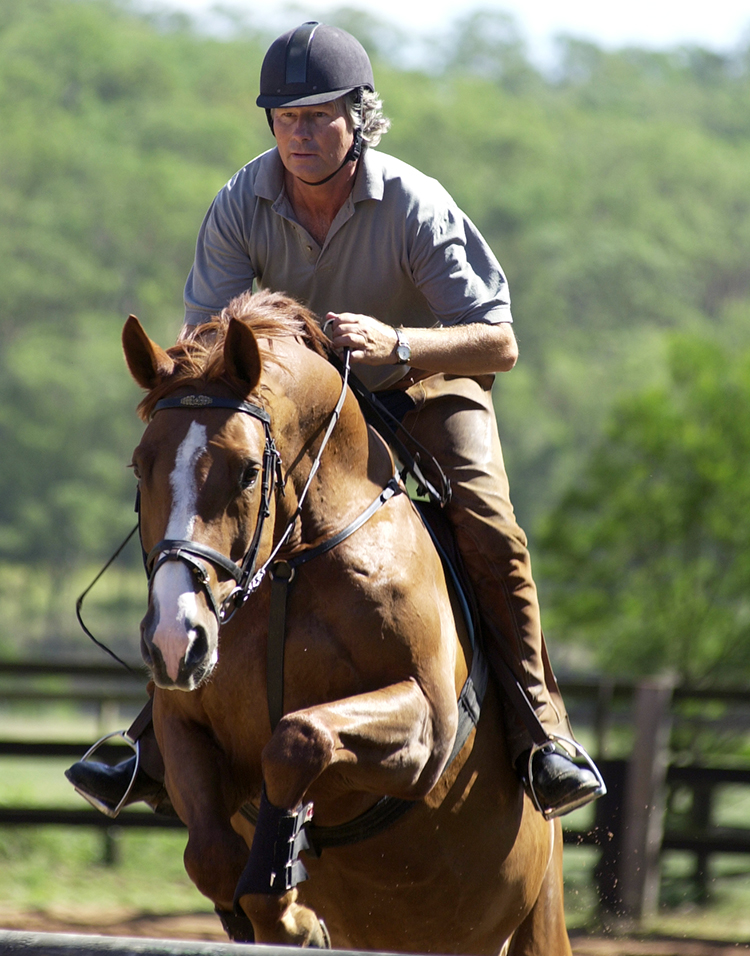
What’s the spookiest horse you’ve ever got to Grand Prix?
“Spectre, he was like this horse, maybe a little worse. I got him as a D grader, he was quite green, just done a bit of jump club and some dressage, and he was really spooky. Traditionally people equate spookiness with carefulness, if the horse is very aware of the jump, very frightened for ‘himself, he’s going to be careful.”
“I think in some cases if they are initially a little spooky and then they get out of the spookiness, then that holds true. But if they stay spooky, I think it actually makes them careless in the end. With Spectre, for sure he ended up less careful than I would have expected. As a green horse I wasn’t all that worried how spooky he was but it pretty much always stayed with him.”
“There are a lot of distractions at Australian shows, it is very hard to get a horse relaxed into the ring. The warm-ups are normally bad, especially at the agricultural shows, so the horses tend to go into the ring a little tense, and there is always junk around the edges of the ring, carriage horses, trotters, merry go rounds, those things are distractions. For a horse that is not spooky, they are not going to make him spooky, but for a horse that is a little tense, it is hard to get them in the ring in a good frame of mind.”
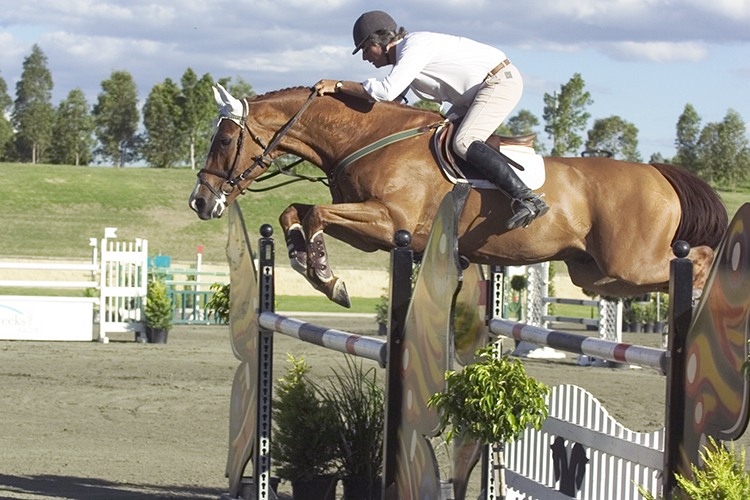
“There’s two sorts of spooky. There’s visually spooky and there’s movement spooky, and they are not related at all. They are two very different sorts of spooky. Visually spooky horses can also be very quiet. You could have dropped a bomb next to Spectre and it would not have worried him at all, noise and movement didn’t bother him – but visually he was very spooky. I think that applies to a lot of Warmbloods, they are not noise and movement spooky but they are visually spooky. Thoroughbreds are normally the other way around, they are not normally visually spooky at all, but they are noise and movement sensitive.”
“For the noise and movement ones, I think to plug their ears is a good start. Try to avoid noisy situations – tackling them usually doesn’t help, they just get more tense and more upset. It’s a nervousness.”
“Visually spooky horses – the Europeans says that there are certain breeds that are naturally spooky, they are so into it, they’ll say, ‘oh that’s an Argentinus, it will probably be spooky – if it’s not spooky it will be a good horse: They generalise a lot, and maybe it is valid.”
“With visually spooky horses, I think you’ve got to generally jump them more, get them familiar with a lot of different things at home, change the jumps around a lot. The important thing is that you can’t do much about the jump, but you can’t let the spookiness affect the approach or the distance. If they are spooking that is bad enough, if they are a little over-aware of the jump, but if on top of that – because of the spooking – they end up with a bad distance, then they are going to start getting scared of the whole jumping process.”
“The important thing is that you can still keep the rhythm and the forwardness in the canter and end up riding the distance you want. You’ve just got to jump a lot of jumps, and have the horse really well connected and not let him get too off your bridle or off your leg. Spooking can change everything – you’ve got to have them in front of your leg to make sure that when they spot the jump and they want to react to it, you’ve still got plenty of canter to fall back on, they don’t drop behind your leg and lose the distance.”

There’s not a lot of point in confronting them?
“No – only if they refuse to go but the actual reaction to the jump and that sort of recognition of the jump, and the changing of outline, and the changing of the breathing – there’s not a lot you can do about that, provided they don’t change their stride. That’s where I prefer the dressage whip because you can just flick them and keep them in front of the leg, with a short stick you’ve got to take your hand off the rein – you don’t want to reprimand them, you want to keep them going. Obviously you can’t use the dressage whip in the ring, but it’s good for training.”
“The main thing is to change things around at home as much as you can, take the horse out as much as you can. I think we have to get used to riding spooky horses, we are riding a bigger percentage of Warmbloods now, and for sure they are spooky. Not as hot, not as tense, not as reactive but spookier…”
But ever so exciting over a jump!

